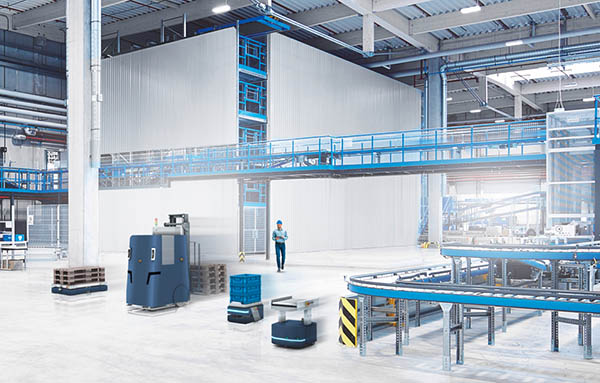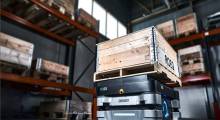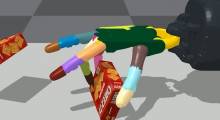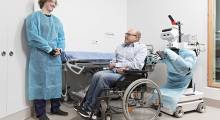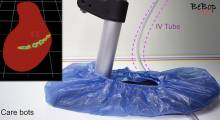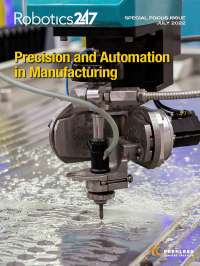DETROIT—Flexibility is essential when it comes to manufacturing processes. As automation continues to spread among automakers and other manufacturers, finding the right sensor solutions to enhance processes has never been more important, according to SICK AG.
At Automate 2022 here this week, the company is showcasing numerous systems for high-productivity environments. In Booth 4107, SICK is presenting digital twin and 3D safety concepts, part localization for bin picking, and lidar localization for autonomous mobile robots (AMRs).
Founded in 1946, SICK is a leading maker of sensors, safety systems, machine vision, emissions monitoring systems, flow measurement, encoders, and automatic identification products for industrial applications.
With more than 3,500 patents, the Waldkirch, Germany-based company offers systems for every phase of production in the logistics, automotive, packaging, electronics, food and beverage, material handling, and process automation markets. SICK has operations or representation in 65 countries worldwide, and its U.S. office is in Minneapolis.
Digital twins enable safe machinery
This year at Automate, SICK Inc. said it is demonstrating its virtual reality safety services. Safety systems on manufacturing equipment can often be complex difficult to engineer or install on manufacturing equipment, the company said.
In this demonstration, SICK explains how it created a 3D safety concept that is a digital twin of machinery. Visitors can see the simulation in action and how it can easily be tailored to their needs, said the company. The product can provide a preview of safeguarding measures, efficient project communication with SICK's team, and fast implementation.
Using laser scanner technology with a 1 cm accuracy, the concept gathers point-cloud data that can be used to design protective measures such as light curtains, laser scanners, muting sensors, and hard guarding. The system enables more precise definition of critical mounting distances and guarding measurements in relationship to the relevant standards.
The 3D safety concept offered by SICK Safety Services team also allows for optimization of safety measures to achieve the highest possible productivity while also keep personnel safe and compliant to current relevant standards. SICK called this “safe productivity.”
System provides part localization for bin picking
With the boom in manufacturing, throughput needs to scale up. A wide variety of items need to be handled at high speed. Floor space and worker availability are limited resources. Fully automated picking robots can step in to increase pick-and-place accuracy and speed with a 24/7 uptime and a small footprint.
SICK is displaying its high-precision robot guidance system for localizing items to be picked. A high-resolution, high-speed camera detects a wide range of objects of different shapes and colors.
The robot has automatic detection of all kinds of objects, even in challenging applications with reflective and shiny objects. It can localize items in multiple bins and has a highly accurate picking rate due to a high-precision 3D point cloud.
In addition, the robot includes artificial intelligence and machine learning so it can be trained for new scenarios using dStudio from SICK and the classification of a wide range of objects.
SICK shows AMR localization at Automate
SICK is also displaying products for autonomous vehicles and mobile robots, including its latest lidar localization technology. Assets in a factory can be tracked continuously, and their space-time coordinates can be continuously recorded and stored.
This data offers transparency about all the important movements on the warehouse floor, said SICK. Today's analytics tools can already use this data to make connections between different events, presenting an unfiltered look into actual production processes, it said.
All the established technologies—ultra-wide-band tags, lidar contour mapping, line-guidance sensors, and infrastructure sensors—record either their own positions or the positions of the desired objects. Depending on the application as well as the positioning accuracy and update rate required, users can select the right technology or combine various technologies.
Localization technology is a key factor in achieving the type of networked production needed for digital transformation, said SICK. It can be used for agile process planning to optimization production, it added.
Localization data can also give companies an understanding of all production-related assets, load carriers, and loading equipment. They can then optimize and dynamically adapt travel paths, as well as prepare or flexibly schedule setup times. SICK said users can also plan and control material flow based on consumption, boosting delivery quality and on-time delivery.
Article topics
Email Sign Up

